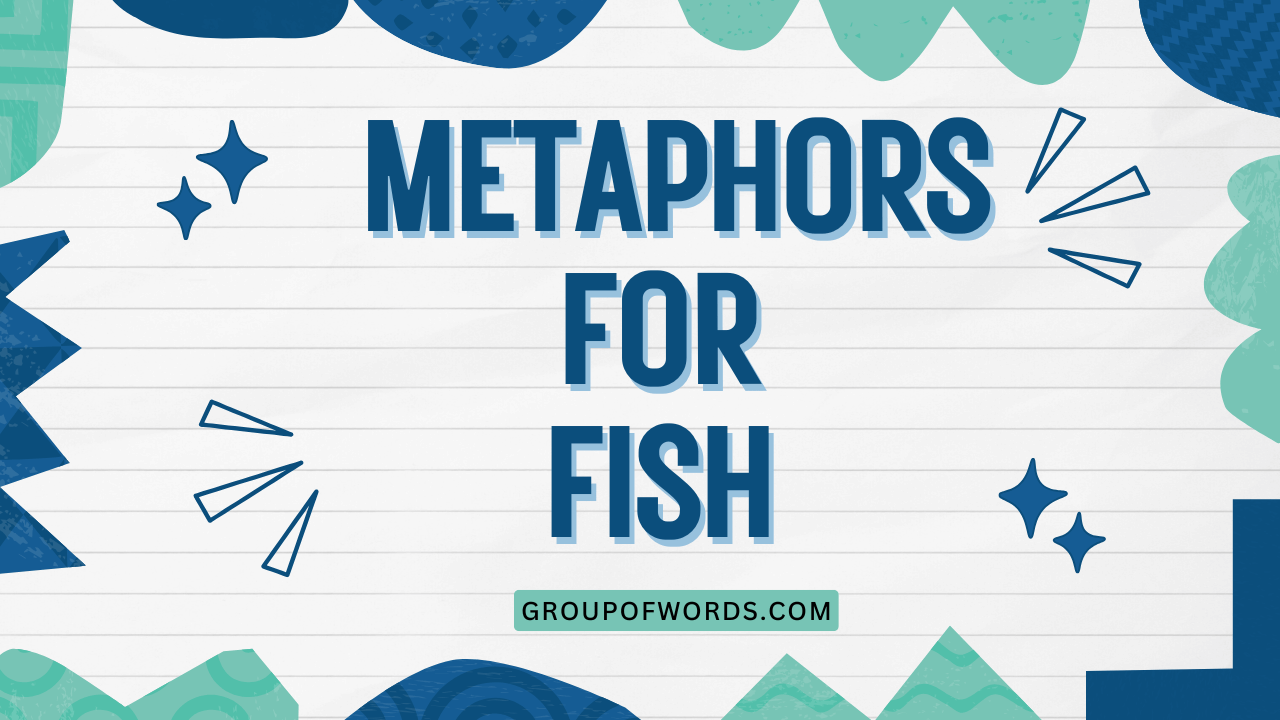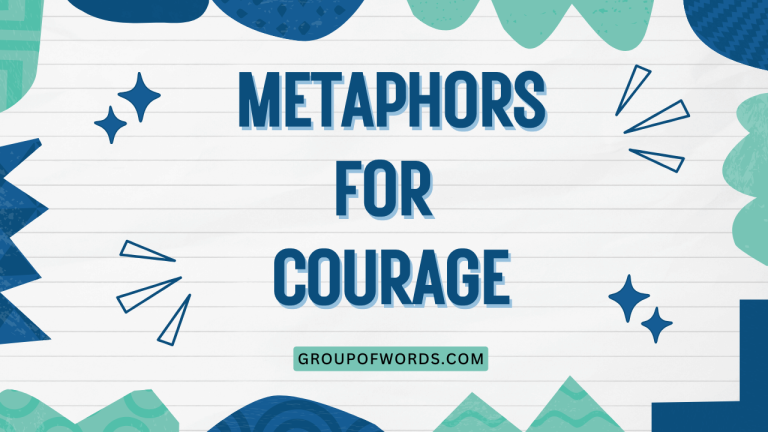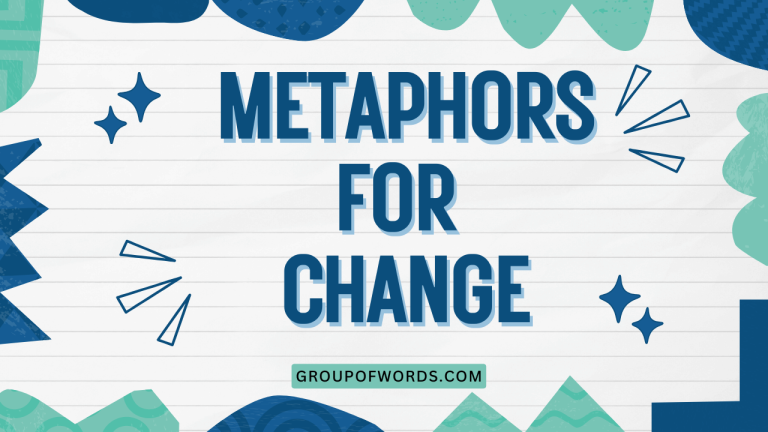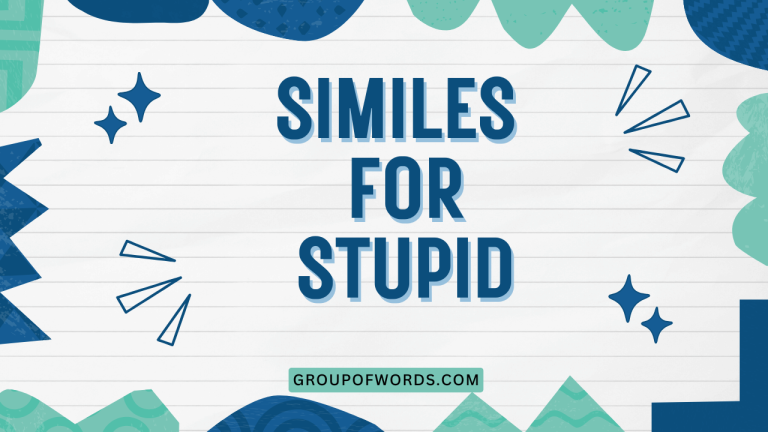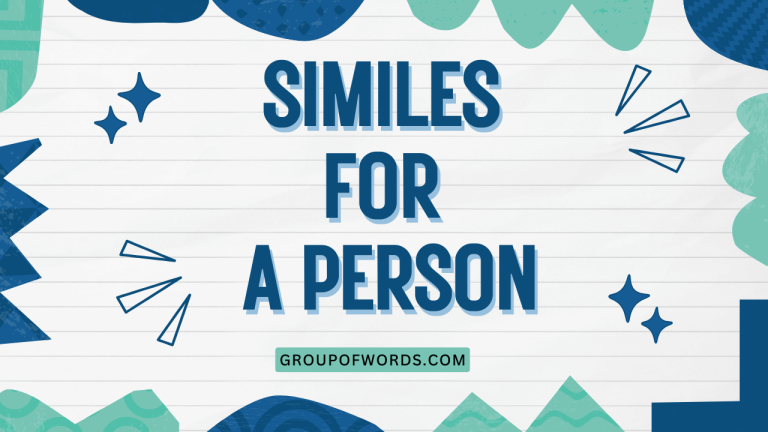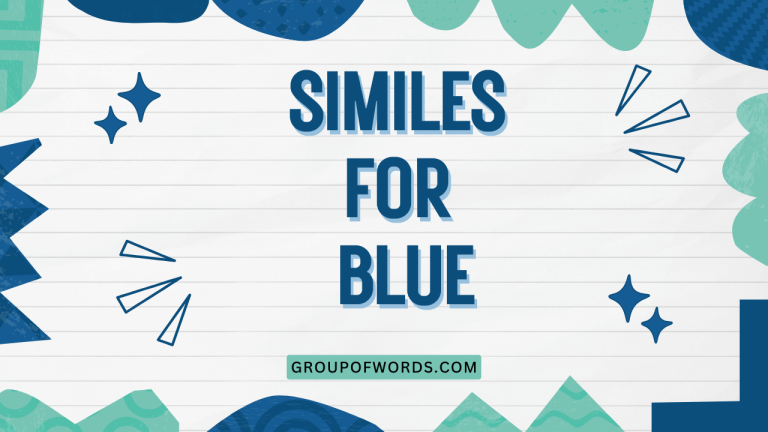Swimming in Similes: Metaphors for Fish Explained
Metaphors are a cornerstone of figurative language, enriching our communication by creating vivid imagery and deeper understanding. When we use metaphors for “fish,” we’re not just talking about aquatic creatures; we’re employing them to represent abstract concepts, personality traits, or even social situations.
This article dives deep into the world of fish metaphors, exploring their various forms, meanings, and applications. Understanding these metaphors will not only enhance your comprehension of English literature and everyday conversations but also sharpen your creative writing skills.
This guide is perfect for English language learners, writers seeking to enrich their prose, and anyone curious about the power of figurative language.
Table of Contents
- Introduction
- Definition of Metaphor for Fish
- Structural Breakdown
- Types and Categories of Fish Metaphors
- Examples of Fish Metaphors
- Usage Rules for Fish Metaphors
- Common Mistakes with Fish Metaphors
- Practice Exercises
- Advanced Topics
- Frequently Asked Questions
- Conclusion
Definition of Metaphor for Fish
A metaphor is a figure of speech that directly compares two unlike things without using “like” or “as.” When we use “fish” metaphorically, we’re transferring qualities or characteristics associated with fish to something else. This can range from simple comparisons of behavior to complex symbolic representations.
Understanding the context is key to interpreting the intended meaning of a fish metaphor.
In essence, a metaphor for fish uses the inherent characteristics of fish – such as their environment (water), behavior (swimming, schooling), or physical attributes (scales, fins) – to represent something entirely different. The effectiveness of the metaphor lies in the reader’s or listener’s ability to recognize the connection between the fish and the concept being conveyed.
This connection creates a richer, more evocative understanding than literal language could achieve.
Structural Breakdown
The basic structure of a fish metaphor involves two main elements: the tenor and the vehicle. The tenor is the subject to which the metaphor refers (the thing being described), and the vehicle is the metaphorical term itself (the fish or fish-related concept). The connection between the tenor and the vehicle is the basis of the metaphor’s meaning.
For example, in the sentence “He’s a cold fish,” “he” is the tenor, and “cold fish” is the vehicle. The shared characteristic that links them is a lack of warmth or emotion.
Understanding this structure helps us analyze and interpret metaphors effectively. The context in which the metaphor is used also plays a crucial role in determining its precise meaning.
Consider the sentence “The stock market is full of sharks.” Here, “stock market” is the tenor, and “sharks” is the vehicle. The shared characteristic is predatory behavior and risk.
Types and Categories of Fish Metaphors
Fish metaphors can be categorized based on the qualities they emphasize and the contexts in which they are used. Here are some common categories:
Fish as Symbols
Fish have long been used as symbols in various cultures and religions. These symbolic meanings can be incorporated into metaphors to convey deeper, often spiritual or cultural, messages.
For instance, a fish might symbolize abundance, fertility, or faith, depending on the specific cultural context.
In Christian symbolism, the fish (Ichthys) represents Jesus Christ. Therefore, a metaphor using “fish” in a religious context might allude to faith, salvation, or divine guidance.
Similarly, in some Eastern cultures, fish symbolize good fortune and prosperity. Understanding these symbolic associations enriches our understanding of the metaphor.
Fish as Personality Traits
Certain types of fish and their behaviors are often associated with specific personality traits. These associations can be used to create metaphors that describe someone’s character or temperament.
For example, a “shark” might represent someone aggressive and ruthless, while a “goldfish” might represent someone lacking in memory or intelligence.
The effectiveness of these metaphors relies on the audience’s familiarity with the common stereotypes associated with different types of fish. A “guppy,” for instance, might represent someone small and insignificant, while a “whale” could represent someone large and imposing.
These metaphors can be used to convey complex personality traits in a concise and memorable way.
Fish in Situational Metaphors
Fish metaphors can also be used to describe specific situations or environments. These metaphors often draw on the fish’s natural habitat or behavior to create a vivid image of the situation being described.
For example, a situation might be described as a “fishbowl,” implying a lack of privacy or constant scrutiny.
Another example is the phrase “like a fish out of water,” which describes someone feeling uncomfortable or out of place in a new environment. These situational metaphors can add depth and nuance to our descriptions, making them more engaging and relatable.
The key is to choose a metaphor that accurately reflects the characteristics of the situation.
Examples of Fish Metaphors
The following tables provide extensive examples of fish metaphors, categorized by common themes and usages. Each example is accompanied by an explanation to clarify its meaning and context.
The table below showcases various metaphors that use fish to describe aspects of personality. Each example provides the metaphor, and an explanation of how it is used.
| Metaphor | Explanation |
|---|---|
| He’s a cold fish. | He is unemotional and aloof. |
| She’s a shark in business. | She is aggressive and ruthless in her business dealings. |
| He’s like a goldfish; he forgets everything. | He has a very short memory. |
| She’s a little fish in a big pond. | She is insignificant in a large and competitive environment. |
| He’s always fishing for compliments. | He is constantly trying to get people to praise him. |
| She’s a slippery fish. | She is difficult to catch or pin down. |
| He’s a bottom feeder. | He takes advantage of others’ misfortune. |
| She swam through the meeting like a piranha. | She aggressively dominated the meeting. |
| He schools with the best of them. | He associates with high-achieving individuals. |
| She’s a big fish in a small town. | She is important and influential in a limited environment. |
| He’s just floundering around. | He is struggling and unsure of what to do. |
| She’s baiting him like a fisherman. | She is trying to lure him into a trap. |
| He’s hooked on that new game. | He is addicted to the game. |
| She’s swimming against the current. | She is going against the popular opinion or trends. |
| He’s a guppy in a shark tank. | He is vulnerable and outmatched in a dangerous environment. |
| She’s a whale of a woman. | She is a large and imposing woman. |
| He’s a real catch. | He is a desirable and valuable person. |
| She’s like a fish in water when she’s dancing. | She is very comfortable and skilled at dancing. |
| He’s a salmon fighting upstream. | He is persistently overcoming obstacles. |
| She’s the queen bee of the fishbowl. | She is the most popular and influential person in a small, confined social group. |
| He’s a sea bass of success. | He is a calm, collected, and deliberate person who achieves great success by strategically navigating the waters of opportunity. |
| She’s an angler fish of manipulation. | She is someone who uses deceptive tactics to lure and control others. |
| He’s a manta ray of serenity. | He is a person who exudes peace and grace, effortlessly gliding through life’s challenges with a calm and gentle demeanor. |
This table illustrates metaphors related to environments or situations, using fish as the central image.
| Metaphor | Explanation |
|---|---|
| It’s a fishbowl environment. | There is a lack of privacy and everything is visible to everyone. |
| He’s a fish out of water. | He is uncomfortable or out of place in a new environment. |
| The stock market is full of sharks. | The stock market is a dangerous and predatory environment. |
| The office is a shark tank. | The office is a highly competitive and cutthroat environment. |
| The project was a real fishing expedition. | The project involved a lot of searching and uncertainty. |
| He was thrown in at the deep end. | He was given a challenging task with little preparation. |
| It’s a feeding frenzy out there. | There is intense competition for limited resources. |
| She’s navigating troubled waters. | She is dealing with difficult and challenging circumstances. |
| He’s swimming in money. | He is very wealthy. |
| It’s like shooting fish in a barrel. | It is very easy and effortless. |
| The rumor mill is a feeding ground for gossip. | Gossip thrives and spreads quickly in that environment. |
| The negotiations were a tangled net. | The negotiations were complicated and difficult to resolve. |
| The company is floundering. | The company is struggling and failing. |
| He was caught in the undertow of the scandal. | He was negatively affected by the scandal. |
| She’s swimming upstream against bureaucracy. | She is fighting against a rigid and resistant system. |
| The political landscape is a sea of uncertainty. | The political situation is unpredictable and unstable. |
| The project is dead in the water. | The project has failed and is no longer viable. |
| The team is just treading water. | The team is making no progress and barely surviving. |
| The job market is a vast ocean of opportunities. | There are many job opportunities available. |
| He’s trying to stay afloat in the competitive industry. | He’s working hard to survive and succeed in a challenging industry. |
| The startup culture is a breeding ground for innovation. | The startup environment fosters and encourages creativity and new ideas. |
| They’re navigating the murky waters of international politics. | They’re dealing with the complex and unclear situations in international relations. |
| The legal system is a complex and dangerous reef. | The legal system is intricate and filled with potential pitfalls. |
This table contains metaphors using fish as symbols, often drawing from cultural or religious associations.
| Metaphor | Explanation |
|---|---|
| He wears his faith like a fisherman’s cross. | His faith is a constant reminder of his values. |
| The church is a net cast wide, gathering all kinds of fish. | The church welcomes people from all walks of life. |
| Her dreams were like schools of colorful fish, darting just out of reach. | Her dreams were vibrant and elusive. |
| His words flowed like a river teeming with life. | His words were full of energy and vitality. |
| The city was a vast aquarium, filled with strange and exotic creatures. | The city was diverse and full of unusual people. |
| His thoughts were like deep-sea fish, rarely seen and hard to understand. | His thoughts were profound and mysterious. |
| The old man’s memories were like fossils embedded in ancient rock. | The old man’s memories were old and precious. |
| The artist’s canvas was a sea of colors. | The artist’s canvas was full of vibrant colors. |
| The music was a siren’s call, luring sailors to their doom. | The music was enticing but dangerous. |
| The poet’s words were pearls, carefully crafted and precious. | The poet’s words were beautiful and valuable. |
| The ocean of knowledge is vast and deep. | There is an immense amount to learn. |
| His soul was a deep, dark sea. | His soul was mysterious and unknowable. |
| Her eyes were pools of deep blue. | Her eyes were a beautiful shade of blue. |
| His tears were a river of sorrow. | He was deeply saddened. |
| The world is a stage, and we are all just players. | Life is like a play, and we are all actors. |
| Time is a river, constantly flowing. | Time is continuous and never-ending. |
| Love is an ocean, vast and deep. | Love is boundless and profound. |
| Life is a journey, not a destination. | The experience of living is more important than the end result. |
| His heart was a fragile seashell, easily broken. | His heart was vulnerable and sensitive. |
| The truth is a pearl hidden in the depths. | The truth is valuable but difficult to find. |
| Dreams were like schools of fish, darting just out of grasp. | Dreams are elusive and hard to achieve. |
| Her laughter was a bubbling brook, pure and refreshing. | Her laughter was joyful and invigorating. |
Usage Rules for Fish Metaphors
When using fish metaphors, it’s important to consider the following rules:
- Context is key: Ensure that the context makes the metaphor clear and understandable. The audience should be able to readily connect the fish-related concept to the intended meaning.
- Clarity: Avoid overly obscure or complex metaphors that might confuse the reader. The metaphor should enhance understanding, not hinder it.
- Appropriateness: Choose metaphors that are appropriate for the tone and style of your writing. A humorous metaphor might be out of place in a serious context.
- Originality: While common metaphors can be effective, try to create original metaphors that offer a fresh perspective. This will make your writing more engaging and memorable.
- Consistency: Maintain consistency in your use of metaphors. Avoid mixing metaphors that create conflicting images or meanings.
It’s also crucial to be aware of the connotations associated with different types of fish. For example, using “shark” to describe someone might evoke negative feelings of aggression and ruthlessness.
Therefore, choose your metaphors carefully to ensure that they convey the intended message accurately.
Common Mistakes with Fish Metaphors
Here are some common mistakes to avoid when using fish metaphors:
- Mixed metaphors: Combining two or more metaphors that create conflicting images.
- Incorrect: “He was a shark in the office, but he also felt like a fish out of water.”
- Correct: “He was a shark in the office.” or “He felt like a fish out of water.”
- Clichés: Overusing common metaphors that have lost their impact.
- Cliché: “He’s a cold fish.”
- Better: “His demeanor was as icy and detached as a deep-sea anglerfish.”
- Inappropriate metaphors: Using metaphors that are not suitable for the context.
- Inappropriate: “The funeral was like shooting fish in a barrel.”
- Appropriate: “The funeral was a solemn and respectful occasion.”
- Unclear metaphors: Using metaphors that are difficult to understand or interpret.
- Unclear: “He was a piscatorial enigma.”
- Clear: “He was a mysterious and unpredictable person.”
By avoiding these common mistakes, you can ensure that your fish metaphors are effective, clear, and appropriate for the intended audience and context.
Practice Exercises
Test your understanding of fish metaphors with these practice exercises. Identify the meaning of each metaphor in the following sentences.
| Question | Answer |
|---|---|
| 1. She’s always fishing for compliments. What does this imply about her personality? | She is constantly seeking praise and validation from others. |
| 2. The office environment is a shark tank. What does this suggest about the workplace? | It is highly competitive and cutthroat. |
| 3. He felt like a fish out of water at the conference. What does this mean about his experience? | He felt uncomfortable and out of place. |
| 4. The project was dead in the water. What does this indicate about the project’s status? | It has failed and is no longer viable. |
| 5. She swam against the current to achieve her goals. What does this imply about her efforts? | She faced opposition and challenges but persevered. |
| 6. He’s a big fish in a small pond. What does this suggest about his position? | He is important and influential in a limited environment. |
| 7. The politician navigated the troubled waters of the scandal. What does this mean about his actions? | He dealt with difficult and challenging circumstances related to the scandal. |
| 8. The company is floundering in the market. What does this indicate about the company’s performance? | The company is struggling and failing. |
| 9. He was hooked on the new video game. What does this imply about his behavior? | He was addicted to the game. |
| 10. She’s a slippery fish when it comes to answering direct questions. What does this suggest about her character? | She avoids giving straightforward answers and is difficult to pin down. |
Exercise 2: Create your own fish metaphors. Complete the following sentences by adding an appropriate fish metaphor.
| Question | Answer |
|---|---|
| 1. The new intern felt like ________ in the bustling office. | a small fish |
| 2. The negotiation process was ________, making it difficult to reach an agreement. | a tangled fishing net |
| 3. Despite the setbacks, she continued to ________, determined to succeed. | swim upstream |
| 4. He was ________ in the world of online gaming. | a shark |
| 5. The project, once promising, is now ________ due to lack of funding. | dead in the water |
| 6. After years of hard work, she finally became ________ in her industry. | a big fish |
| 7. The gossip in the office spread like ________. | a feeding frenzy |
| 8. He always tried to ________ from his boss. | fish for compliments |
| 9. She was a ________, always avoiding any kind of commitment. | slippery fish |
| 10. In the competitive job market, it’s essential to ________ to stay relevant. | stay afloat |
Advanced Topics
For advanced learners, consider exploring the following topics related to fish metaphors:
- Cultural variations: Investigate how different cultures use fish metaphors and the unique meanings they convey.
- Literary analysis: Analyze how fish metaphors are used in literature to create symbolism, imagery, and character development.
- Figurative language theory: Explore the broader theories of metaphor and figurative language, including cognitive metaphor theory and conceptual blending.
- Etymology: Research the origins of common fish metaphors and how their meanings have evolved over time.
By delving into these advanced topics, you can gain a deeper understanding of the complexities and nuances of fish metaphors and their role in language and culture.
Frequently Asked Questions
Here are some frequently asked questions about fish metaphors:
- What is the difference between a metaphor and a simile?
A metaphor directly compares two unlike things without using “like” or “as,” while a simile uses “like” or “as” to make the comparison. For example, “He is a shark” is a metaphor, while “He is like a shark” is a simile.
- Why are metaphors important in language?
Metaphors add depth, imagery, and emotional resonance to language. They can make complex ideas more understandable and engaging. They also stimulate creativity and critical thinking.
- How can I improve my ability to understand and use metaphors?
Read widely, pay attention to the metaphors used in everyday conversations, and practice using metaphors in your own writing. Analyzing the structure and context of metaphors can also be helpful.
- Are some fish metaphors more common than others?
Yes, some fish metaphors, such as “cold fish,” “shark,” and “fish out of water,” are more widely used and recognized than others. These common metaphors can be effective, but try to create original metaphors to add freshness to your writing.
- Can fish metaphors be used in formal writing?
Yes, but use them judiciously. Ensure that the metaphors are appropriate for the tone and style of the writing and that they enhance understanding rather than creating confusion.
- How do cultural differences affect the interpretation of fish metaphors?
Different cultures may associate different meanings with fish and their behaviors. Be aware of these cultural variations to avoid misinterpretations.
- What is a mixed metaphor, and why should I avoid it?
A mixed metaphor combines two or more metaphors that create conflicting images or meanings. This can lead to confusion and undermine the effectiveness of your writing.
- How can I make my fish metaphors more original and creative?
Think beyond common associations and explore less familiar aspects of fish behavior and characteristics. Consider using specific types of fish to create more nuanced and evocative metaphors.
Conclusion
Mastering fish metaphors can significantly enhance your communication skills, adding color, depth, and nuance to your language. By understanding the structure, types, and usage rules of these metaphors, you can effectively convey complex ideas and create vivid imagery.
Remember to consider the context, clarity, and appropriateness of your metaphors, and avoid common mistakes such as mixed metaphors and clichés. Embrace the power of figurative language, and let your creativity swim freely in the ocean of possibilities.
Continue to practice using fish metaphors in your writing and conversations. Pay attention to how others use them and analyze their effectiveness.
With time and effort, you will develop a strong command of this powerful tool and enrich your communication skills. Happy swimming through the sea of language!
